14 best hikes in Patagonia: from short walks to multi day treks
There is an incredible amount of stunning hiking trails in Patagonia. It is definitely a hiker’s paradise. You don’t even have to be in an incredible physical shape – some of the best hikes in Patagonia are accessible even to relative beginners!
We spent 10 days in Patagonia when we visited South America (Chile mostly, but still) in 2017, which is not exactly enough time to do any serious hiking.
In our case, we managed to do exactly one full day hike, since the weather made it rather dangerous to try others – the Laguna de los Tres hike from El Chalten in Argentina.
In addition to that we managed a short hike in Torres del Paine National park to the lago Nordenskjöld, which offers an incredible view of the Cuernos del Paine, and Mirador Los Condores from El Chalten in Argentina.
Plus, we did a guided tour on the Perito Moreno glacier in Los Glaciares national park – definitely, a must do.
Since we didn’t get to enjoy more hiking, I decided to do a lot of research to put together a list of some of the best hikes in Patagonia.
Honestly, it was almost impossible to choose between them, as each of the treks offers something different, but equally amazing.
As a side note, most of the hikes in Patagonia can be done without a travel guide. There are some companies, though, that offer guide services and who might even provide you with equipment for camping and preparing food if you’d like.
In this article you’ll see some of the best hikes in Patagonia, both multi-day treks, single day, and not even day hikes (I’d call them walks even).
Here you can see all of them on a map.
This post might contain affiliate links, which means that if you purchase anything via them, we might earn a small commission – at no extra cost to you. Check our affiliate disclaimer for more information.
As an Amazon Associate we earn from qualifying purchases.
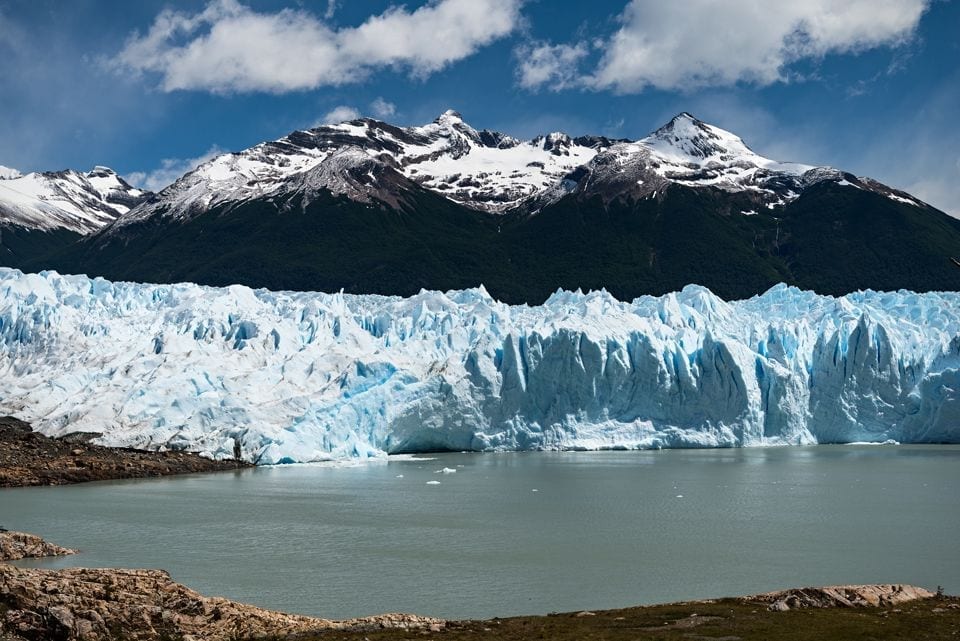
Best short hikes in Patagonia
By short hikes, I mean those that can be completed in less than 3 hours. You can do the trek and be back for a lunch in town.
Just because the hike is short, doesn’t mean that you won’t get to enjoy incredible views.
Hell, even the views from the side of the road tend to be jaw-dropping, so don’t be hesitant to add some of the easy hikes to your Patagonia itinerary.
Lago Nordenskjöld in Torres del Paine NP, Chile
The beautiful lake Nordenskjöld lies at the feet of the Cuernos del Paine in the Torres del Paine national park in Southern Chile.
The viewpoint of the lake and the Cuernos is just a short hike away from the Salto Grande waterfall.
The hike is more of a walk, and you’ll get to enjoy many interesting sceneries of the Patagonia wilderness – ragged peaks, emerald waters, and mesmerizing green meadows.
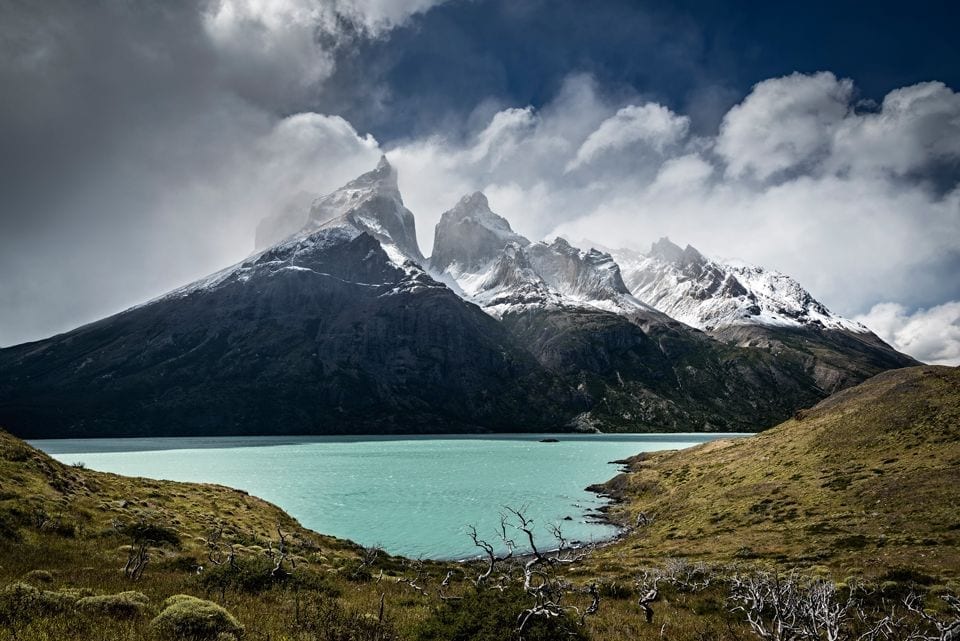
Location: Torres del Paine National Park in Chile
Duration: 40 minutes to 1 hour
Distance: approximately 2km
Difficulty: very easy, minimal elevation gain
What to carry: nothing extra is needed
Paid? No, the only fee is to enter the park itself
Mirador Los Condores and Las Aguilas in Los Glaciares NP, Argentina
Technically, it’s two different hikes, but they are both at the same place. Just at one point of the trail, there’s a fork – if you turn left, in 10 minutes you’ll reach the Los Condores viewpoint, and if you turn right, it’s 30 minutes to the Las Aguilas.
The starting point of this walk is at the National park visitor’s centre in El Chalten. The trail is well signed, and it gives you the opportunity to enjoy some incredible views just a short and easy walk away.
As the name suggests, the trails offer you a chance to see some condors, as well as give a view of the lago Viedma.
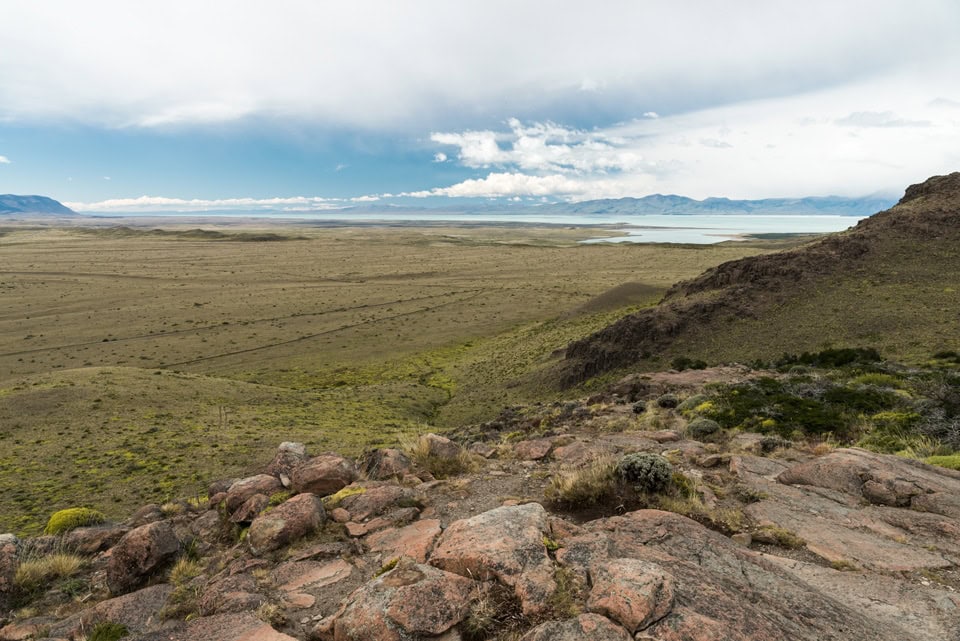
We did this hike the next day after doing one of the best hikes in Patagonia – Laguna de los Tres, when I thought that I wouldn’t be able to walk uphill ever again because of the muscle pain. But alas, we did it!
Location: Los Glaciares National Park in Argentina
Duration: 2h
Distance: 4 or 6km
Difficulty: Easy, minimal elevation gain
What to carry: nothing extra
Paid? No
Related: Where to stay in El Chalten
Cerro Campanario in Nahuel Huapi National Park
One of the most popular hikes in the Argentinian lake district, the Cerro Campanario hike is located near the town of Bariloche.
This easy walk offers you incredible views of Lake Nahuel Huapi, the Llao Llao peninsula, and the surrounding peaks and valleys.
At the top of the mountain, you get to enjoy views of some of Patagonia’s most stunning landscapes, such as El Trebol Lagoon and some of the mountains – Cerro Otto and Cerro Catedral.
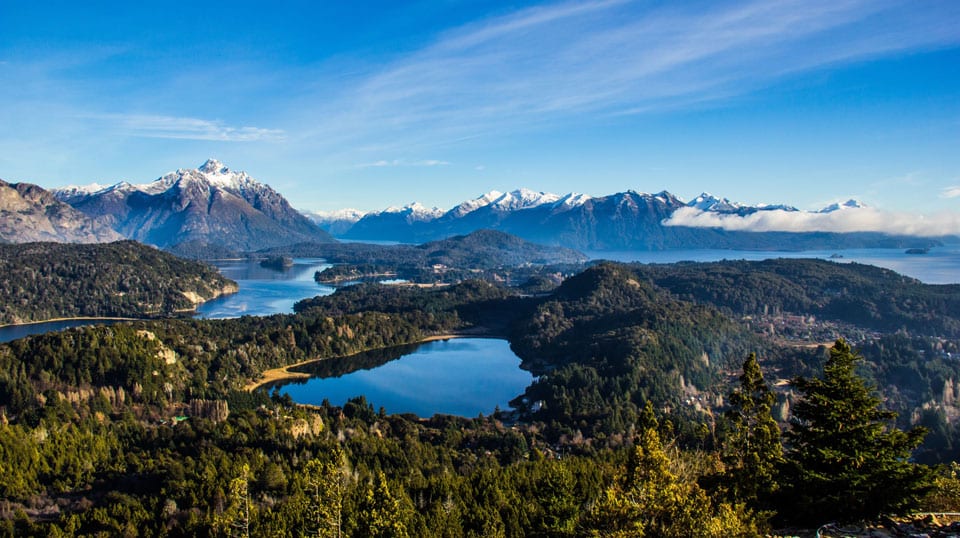
Location: Nahuel Huapi National Park in Argentina
Duration: 30 minutes
Difficulty: Easy, if a little steep at times; you can even take a chair lift
What to carry: snacks and drinks. There’s a café at the end, but it’s expensive
Paid? No, but the lift is paid
Mirador of Exploradores Glaciar in Laguna San Rafael NP, Chile
Get an unobstructed view of the Exploradores Glaciar with this rather easy and short walk to the mirador Mirador Glaciar Exploradores.
This short walk through the forest setting leads to a balcony where you can overlook the glacier in all its glory.
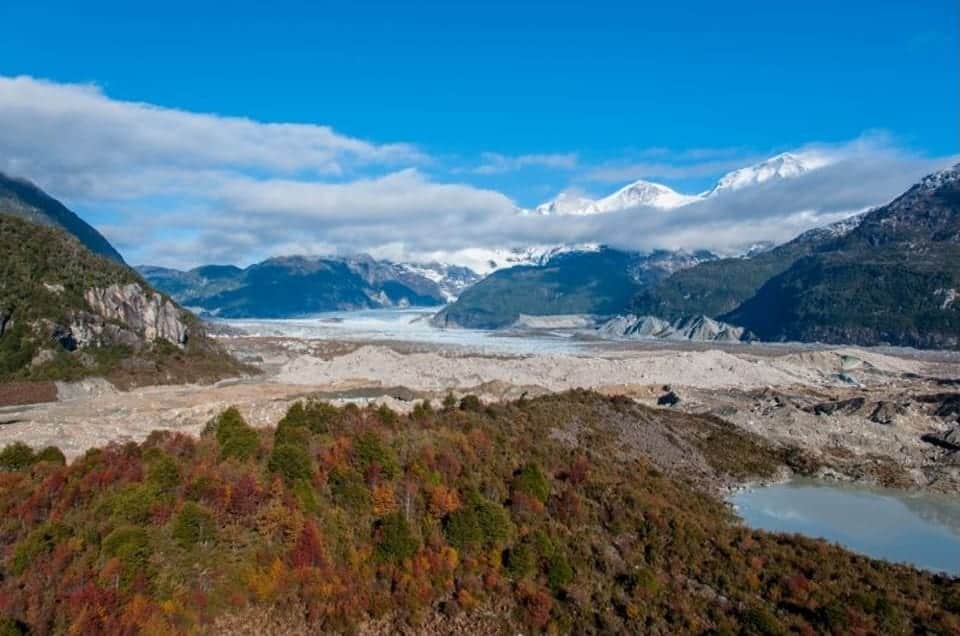
Is just looking at it not enough? You can go on a tour that takes you on the glacier itself!
On the tour, you get to experience walking on glacial ice, looking in some turquoise glacial ponds, and even going through ice tunnels!
Location: Laguna San Rafael National Park, Chile
Duration: 25 minutes (6-7h for the guided trek)
Distance: 1km (8,5km for the glacier hike)
Difficulty: moderate, 60m elevation gain (the glacier hike is rated moderate)
What to carry: snacks and drinks.
Paid? The tour is paid
Best day hikes in Patagonia
Not too many people are ready to commit to a multi-day trek, so they (and us, for that matter) chose to go on day hikes instead.
But there are quite a few options of where to go for full-day hikes in Patagonia, both in Chilean and Argentinian one.
Minitrekking on Perito Moreno glacier in Los Glaciares NP, Argentina
Although this might be the most popular glacier hike in Patagonia and it’s definitely one of the most popular things to do in Los Glaciares, and you must do it with a tour guide, it’s definitely a remarkable experience to have.
Despite most of the glaciers in the world losing their mass due to global warming and climate change, the Perito Moreno glacier remains in a state of equilibrium, meaning that it loses as much of the ice as it gains. Plus, you can constantly hear the ice breaking and cracking, as the glacier moves approximately 2 meters a day!
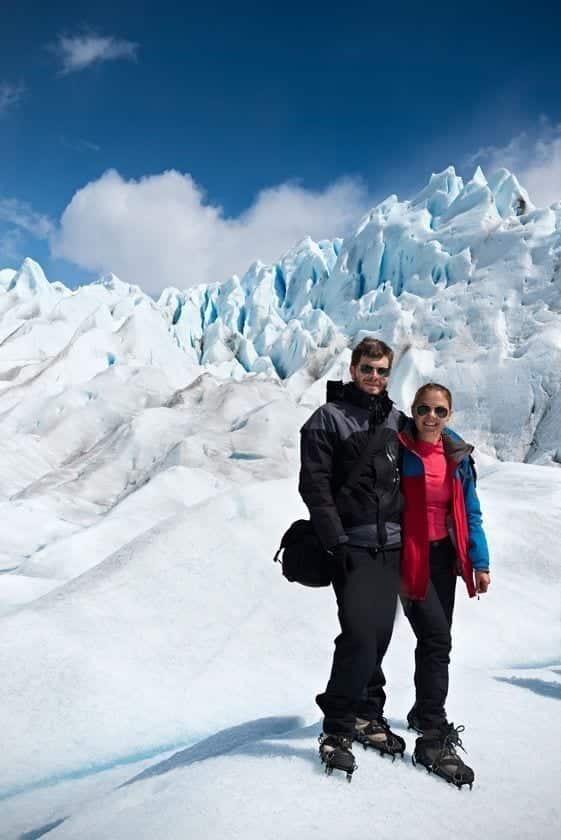
The company that does the tour we did – Hielo y Aventura – has two tours on ice – Minitrekking and Big Ice. There are also some other companies doing it – check out which ones in our article about activities that you can do in Los Glaciares National park.
Honestly, we did the minitrekking, but I wish we had done the Big Ice tour. I loved the minitrekking so much that I wished we could stay longer! And really, the minitrekking was much easier than I expected.
The tour guides speak English, Spanish, and Portuguese. They not only take you on the trek but provide you with information about the glacier and glaciology in general.
After the tour, definitely spend a bit of time on the balconies overlooking Perito Moreno! We saw some enormous chunks of ice fall off the side of the glacier, it was just phenomenal!
Location: Los Glaciares National Park in Argentina
Duration: 10 hours (1,5h on ice); includes transfer times (optional)
Difficulty: moderate
What to carry: food for after the hike, warm clothing
Paid? Yes
Don’t feel like hiking on the ice? There are cruise tours available as well.
Laguna de los Tres in Los Glaciares NP, Argentina
Obviously, since we did the Laguna de los Tres hike in Los Glaciares National Park ourselves, I had to start with it.
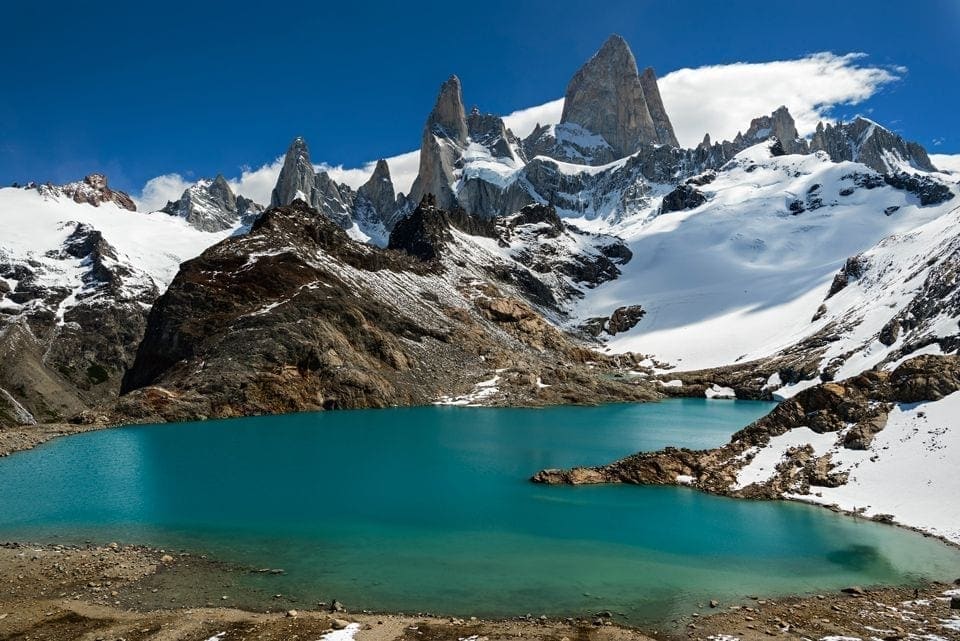
It’s one of the most famous hikes in Patagonia, so expect lots and lots of crowds. On the plus side, though, it means that it’s hard to get lost (the trail is well marked as well, though)!
The hike itself is rather easy for the most part, but the final hour or so is very strenuous.
We saw some children climb to Laguna de los Tres as well! It took them much longer than an hour to do the last part, though – we saw them both on the way up and down.
The view at the end, though? Definitely worth it.
The peaks of Mt Fitz Roy, Poincenot and Torre – the tres in the name of Laguna de los Tres – reflect nicely in the lagoon.
Don’t forget to check out the other laguna – laguna Sucia, located a tiny bit to the left of the Laguna de los Tres. Just a short hike uphill will open up another incredible view to you.
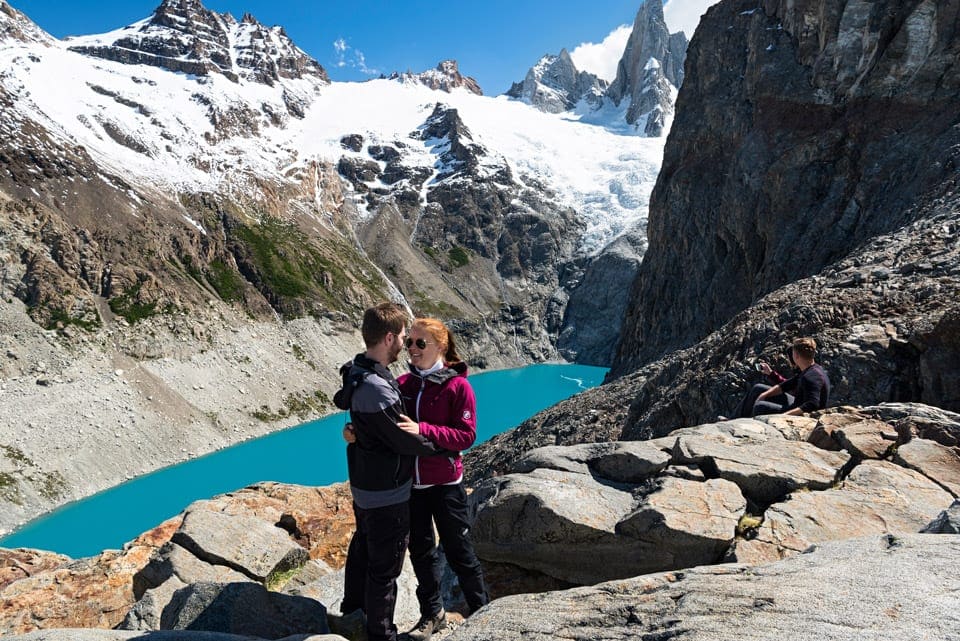
You can even make this a multi-day trek – there are campgrounds on the trail near the last ascent to the laguna de los Tres. It’s one of the most unique things to do in Argentina!
Give yourself the unique chance to enjoy the sun rise over the lagoon!
Location: Los Glaciares National Park in Argentina
Duration: 8 to 10 hours
Distance: 23km
Difficulty: moderate to hard, cumulative approximately 960m elevation gain
What to carry: Hiking poles
Paid? No (unless you do a transfer)
Laguna Torre in Los Glaciares NP, Argentina
Another amazing day hike in Los Glaciares with the starting point in El Chalten.
This relatively easy hike offers several incredible lookouts (miradores) where you’ll have a chance to see the peaks of Cerro Torre. Most of the hike is along the shores of the Rio Torre, until you reach the glacial laguna Torre.
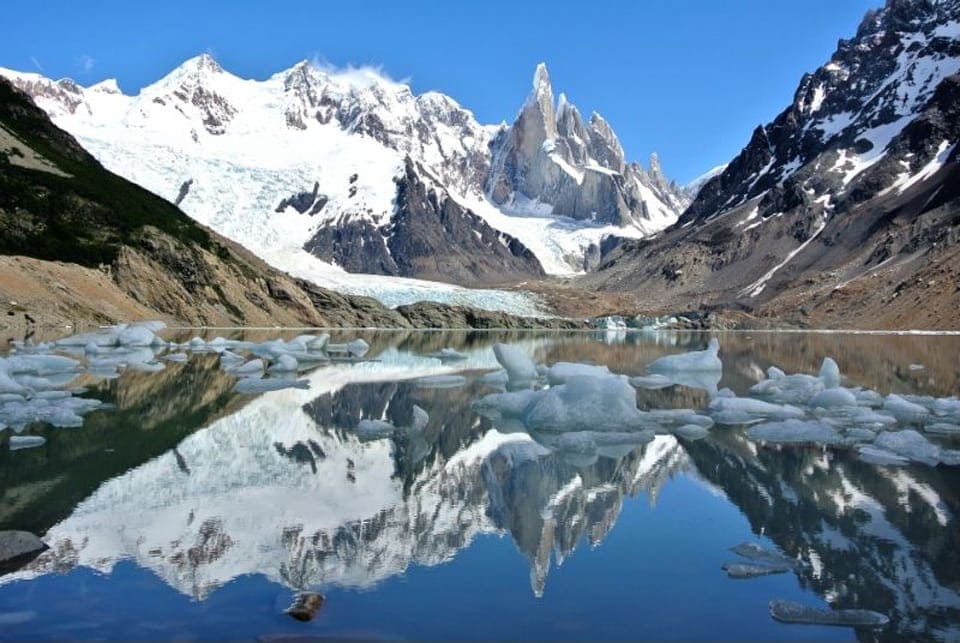
If you decide to go the extra distance along the laguna Torre to Mirador Maestri, you’ll get to see the icy tongue of Glaciar Torre peeking out of the rocks.
Laguna Torre is the start of the Huemul Circuit, so even if you don’t do the full one, you still get to experience at least a part of it!
Location: Los Glaciares National Park in Argentina
Duration: 5 to 6h
Distance: 20km
Difficulty: easy, 250m (350m to mirador Maestri) elevation gain
Paid? No
Grey Glacier in Torres del Paine NP, Chile
The Grey Glacier is one of the most spectacular glaciers in Torres del Paine National Park, which tumbles into Lago Grey.
There are several ways to explore the glaciar Grey – go on a boat tour, kayak, go on a glacier hike, and, of course, do one of the best hikes in Patagonia – a day trek to the Grey Glacier.
The Lago Grey hike is part of the famous W trek, so you get to enjoy a part one of the best multi-day treks in the whole Patagonia!
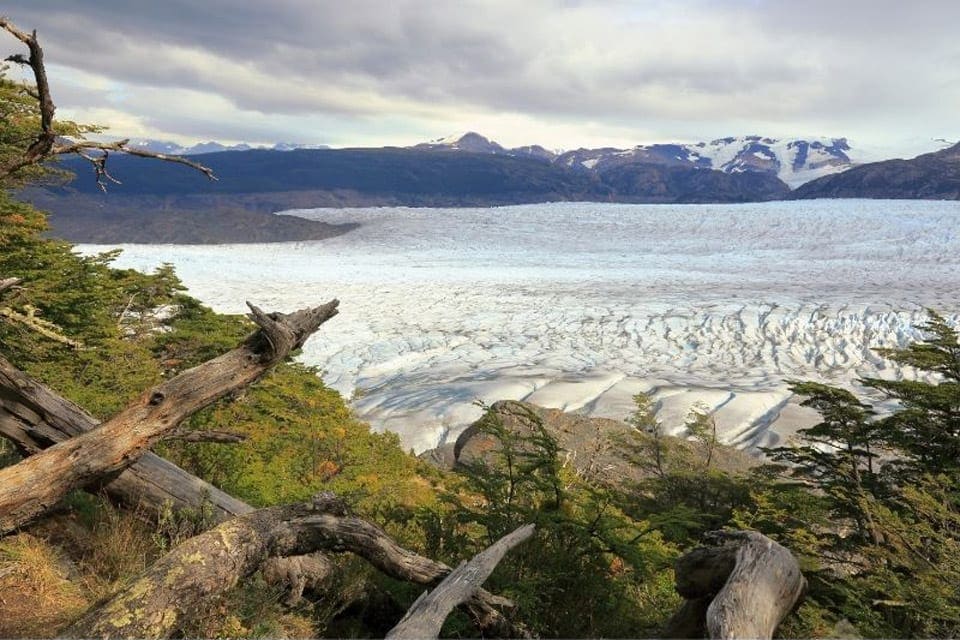
A huge glacier creating icebergs with a deep growl, the blue lago Grey, and the Torres del Paine mountains around – it is definitely a view not to miss.
The hike can be done in one day, but you must make sure to get back to the last ferry. Alternatively, you can reserve a spot at a refugio and enjoy it as a 2-day trek.
Location: Torres del Paine National Park, Chile
Duration: 6h
Distance: 22km
Difficulty: hard
Paid? Entrance fee to Torres del Paine, plus the ferry to the trailhead
Laguna Cerro Castillo in Cerro Castillo NR in Chile
Do you want to enjoy the Cerro Castillo mountains, but don’t feel like doing a multi-day hike?
A hiking trail that used to be an emergency route has opened up, letting you hike up to the Laguna Cerro Castillo in just a day!
Enjoy the turquoise lake, rocks covered in glacial ice, and the stunning looks of the castle-looking Cerro Castillo without worrying about camping in snow and rain.

Unlike the multi-day trek, you start this hike in Villa Cerro Castillo and return back to it.
Location: Cerro Castillo National Reserve, Aysen, Chile
Duration: 6h
Distance: 14km
Difficulty: hard, 1000m elevation gain
Paid? Yes, the entrance fee
Best multi-day treks in Patagonia
Patagonia is a hiker’s paradise with an enormous number of remote areas that have been barely touched by people.
That’s why it makes sense that most of the best hikes in Patagonia take more than just a day.
Take your pick of spending just a night in the wilderness or hiking for days on end. All of these hikes in Patagonia are breathtaking, each in its own way.
W trek (or the longer O trek/Torres del Paine circuit) in Torres del Paine NP, Chile
The most popular multi-day trek in Torres del Paine National Park is the W trek. It’s quintessential for any hiker who’s up for the challenge of a multi-day hike in Patagonia.
This crown-jewel hike takes you through the backcountry of the park on the trail that makes a W shape.
The W hike allows you to enjoy the best of Torres del Paine – the Glacier Grey, Valle Frances, Los Cuernos, Torres del Paine (the mountains), and Paine Grande. And that’s just in addition to all the turquoise lakes, raging rivers, wind-ripped forests, and emerald meadows.
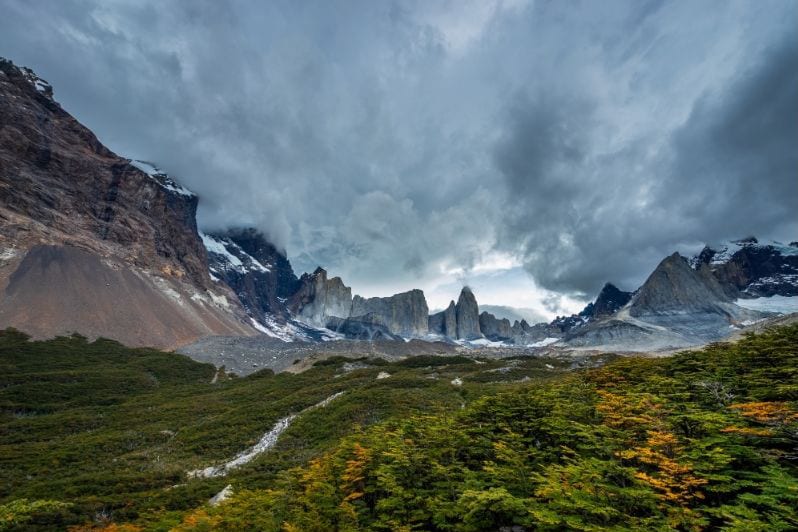
But, do you feel that the W is just not enough and have 3 more days to spare?
Add a little loop to your W and go on the O-trek, also known as the Torres del Paine circuit. It allows you to enjoy the lesser-walked Northern parts of Torres del Paine.
The extended O-trek gives you an opportunity to experience the Southern Patagonia ice field in all of its glory. Keep in mind that there are no refugios on the northern side.
Location: Torres del Paine National Park in Chile
Duration: 5 days (9 for the O trek)
Distance: 71km (120km for the O circuit)
Difficulty: moderate-hard, elevation gain cumulative 2,956 meters for the W trek
What to carry: camping equipment and food. Some refugios offer beds with bedding and food, though, but not on the O trek, where you’ll have to camp.
Paid? Yes – you need to pay the park entrance fee and the accommodation/camping.
Cerro Castillo circuit in Cerro Castillo NP in Chile
One of the least crowded and most beautiful hikes in Patagonia is the Cerro Castillo Circuit in Chile. In some places, like the Cerro Castillo National Park website, this circuit is known as Las Horquetas, which is the starting point of the trail. It ends in Villa Cerro Castillo, which is 30km away.
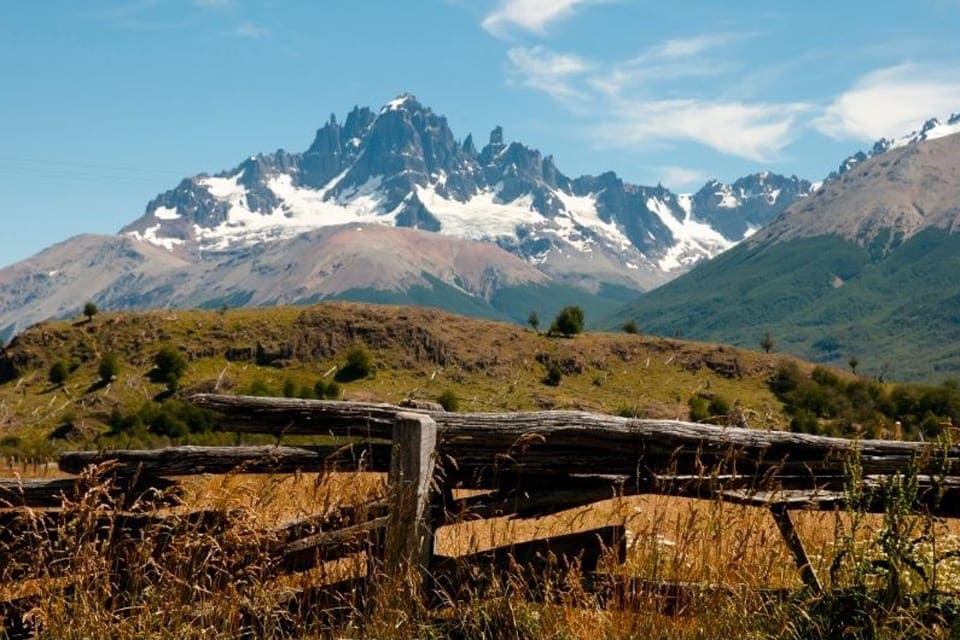
It offers Patagonia at its finest to you. There are turquoise lakes and blue lagoons, hanging glaciers, high mountains and deep valleys, lush forests and rich meadows.
Another outstanding thing about this one of the best trails in Patagonia? It’s still relatively unknown, so you can enjoy all the beauty Patagonia has to offer while meeting a fraction of people that would flood Los Glaciares or Torres del Paine!
On this exceptional trail, there are some campgrounds that have common picnic tables and even outside bathrooms. But make sure to carry food with you, as well as water purification equipment!
Location: Cerro Castillo National Park in Chile
Duration: 4 days
Distance: 57km
Difficulty: hard, elevation gain 2374m
What to carry: camping and cooking equipment, hiking poles
Paid? Entrance fee. You have to cross private ground, which the owners charge for.
The Huemul Circuit Los Glaciares NP, Argentina
The Huemul Circuit is considered to be one of the hardest hikes in Patagonia. Only experienced hikers should go on these.
It goes over two mountain passes, is badly marked, and you cross rivers which sometimes requires ziplining. Since it’s a very demanding hike, you wouldn’t meet a lot of people, which means that you need to prepare for emergency situations as well.
On the other hand, the views definitely are worth it. There are massive glaciers, incredible mountain views, turquoise waters, and lush greenery. The view from Paso del Viento of the Southern Patagonian Ice field, though, definitely makes this one of the best hikes in Patagonia.
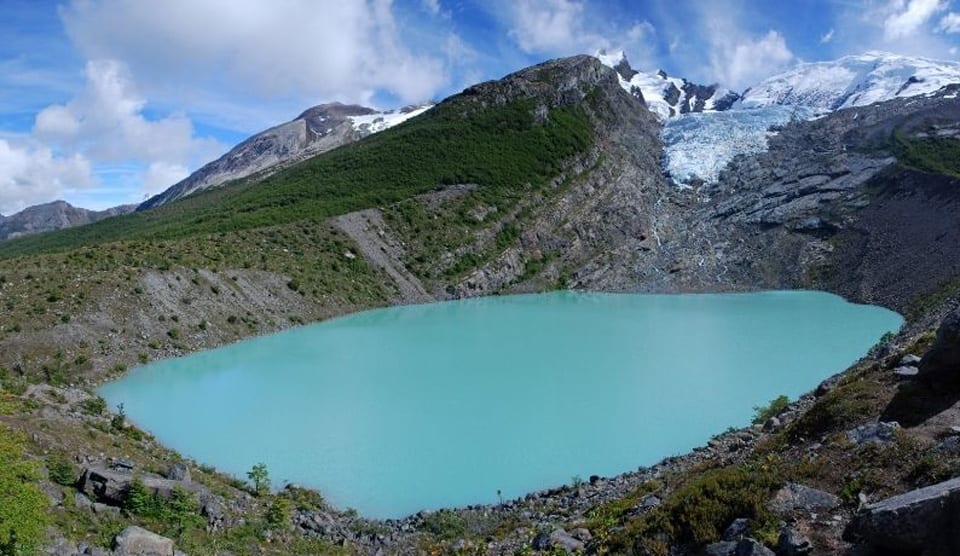
To go on this hike, you need to register with the Centro de Informes Ceferino Fonzo for the national park in El Chaltén to get a hiking permit, plus the rangers will check that you have the safety gear and know-how to use it. You need (per person) 1 harness, 2 carabiners, 1 safety line or sling, 1 thin cord or rope (35m long), a map of the circuit, and a cooking stove.
Location: Los Glaciares National Park in Argentina
Duration: 5 days
Distance: 64km
Difficulty: hard
What to carry: Safety equipment, map, compass or GPS. Camping and cooking equipment. Trekking poles. Bigger (45l at least) hiking backpack.
Paid? Not, unless you go with a guide.
The Lago del Desierto Border Crossing – hiking from Villa O’Higgins to El Chaltén (Chile/Argentina)
This almost one-of-a-kind trek takes you over the Chile-Argentina border through the no man’s land.
Its starting point is located at the very end of the Chilean highway Carretera Austral – in the village of Villa O’Higgins (if you start in Chile), and you cross over the border to the town with the best hikes in Patagonia – El Chalten.
You can do it either from Villa O’Higgins to El Chaltén or the opposite way.
This trip involves ferries, buses, and camping.
On this hike, you get to enjoy the incredible lago del Desierto, views of the Mount Fitz Roy, plus the ferry on Lago O’Higgins will stop at the Glaciar O’Higgins before continuing on.
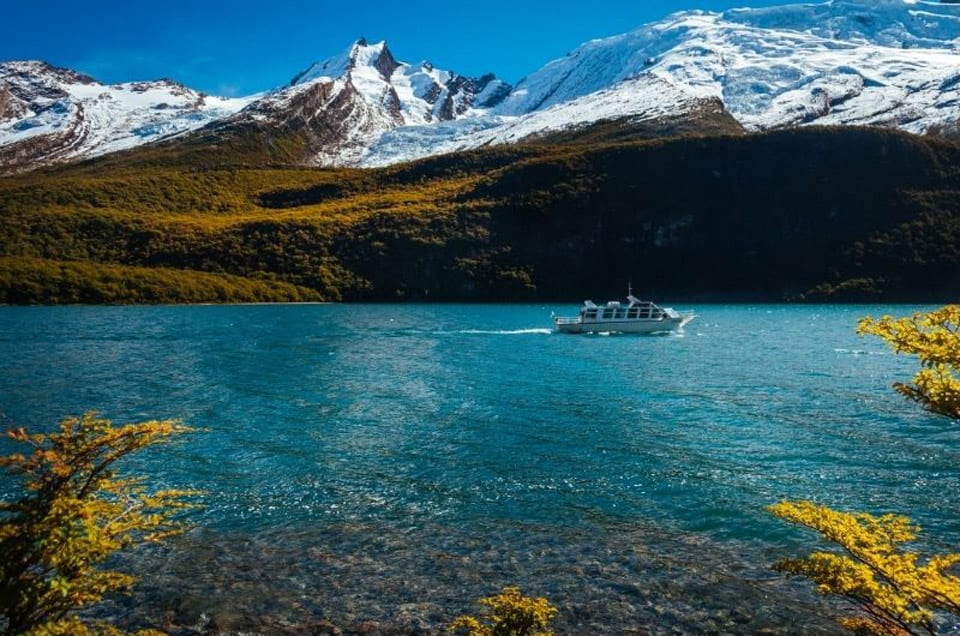
Location: End of Carretera Austral highway, border of Chile and Argentina
Duration: 2-3 days
Distance: 22km
Difficulty: relatively easy
What to carry: both Chilean and Argentinian pesos, camping equipment, food (in case you have to wait for a ferry). Keep in mind that you can’t bring fresh food into either country.
Paid? Ferries and buses are paid
Los Dientes de Navarino in Chile
Named after the Dientes de Navarino mountains, this is considered to be the world’s southernmost long-term trek. It starts in the southernmost settlement known to sailors – Puerto Williams.
The trail circuits the jagged spires of Cordon de los Dientes, which looks like teeth, hence the name – dientes.

This trail in the very Southern Patagonia is not for the beginners nor the faint of heart. It goes through raw wilderness, the weather is savage, to put it mildly, and the trail rather empty, plus there’s no official rescue service.
But if you want to enjoy untouched landscapes with hundreds of lakes, view of the Cape Horn and the Beagle Channel, condors, guanacos, and so much more, plus you have the extensive trekking knowledge, then you can be one of the very few to complete the Dientes de Navarino circuit.
Location: Tierra del Fuego National Park, Chile
Duration: 4-6 days
Distance: 53km
Difficulty: moderate
What to carry: Camping equipment, cooking equipment and food, map, and GPS is beneficial as well.
Paid? No, but if you don’t feel 100% sure about your abilities, it’s better to go with a guided tour. Plus, you need to get there (plane or ferry)
Tierra del Fuego is an incredible place. If you’d like to visit it, know that there are many more hikes here, and of course, so many other things to do. Matej from Czech the World can teach you a lot more about Tierra del Fuego.
Things you should take on all hikes in Patagonia
Although the hikes mentioned in this article differ in length and difficulty, there is some equipment that you should carry on all of them.
For ease of reading, I decided to write these basic items here in a separate paragraph. If the hikes listed below require anything more, I’ll add those items there.
Related: our full Patagonia packing list
Hiking clothes
Definitely wear layers! In Patagonia, it’s not unusual to experience all four seasons in one day, even if you visit in summer. It can go from sun to rain to snow and hail in all of 10 minutes.
So, it’s a good idea to pack – and wear – some lightweight thermal underwear, a fleece jacket, a windproof jacket, and a winter jacket on top. Gloves and a scarf is a good idea as well.
On the bottom, I wore normal hiking pants. And, obviously, hiking shoes.
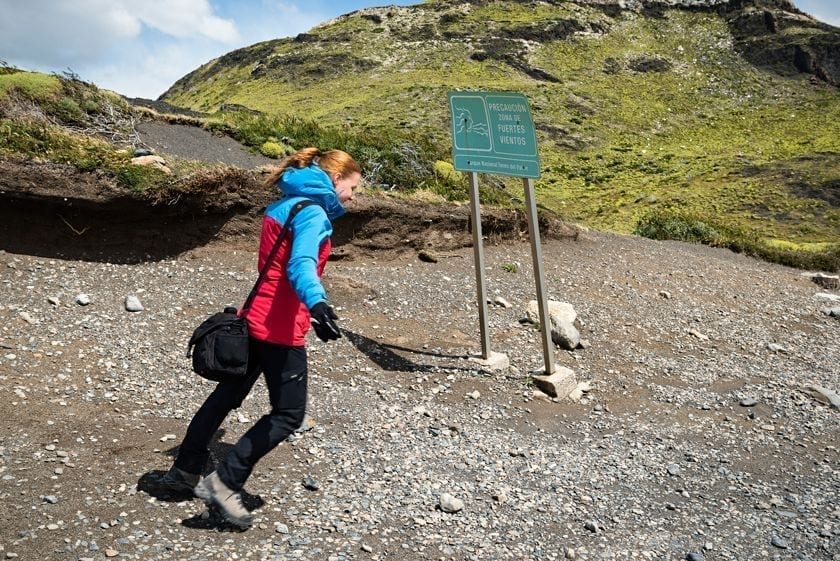
Proper hiking shoes
Although some of the hikes are more like walks, it’s better to always wear proper hiking boots.
The weather, as I already mentioned, is unpredictable – it can be sunny in one minute and snow-raining the next (it’s always bloody windy, though).
It means that the trails can get slippery very fast – you definitely don’t want to end up with a sprained ankle (or worse) because you wore improper shoes.
If possible, try to go to a store and really try the shoes out before buying them. Good shops will have a place where you can try the shoes out on different terrains and angles, to make sure that they fit perfectly. Alternatively, you can check them on Amazon.
Rain cover
The weather in Patagonia changes like crazy, so it’s good to be prepared for rain even if it’s not forecasted. It’s not unusual to have all four seasons in one day – even when visiting Patagonia in summer.
Of course, having waterproof clothes and bags is great, but the rain cover just gives you that extra sense of staying dry.
Proper backpack
A day back (or bigger, if you’re doing a multi-day hike) that is a proper size (we usually do with a 25-30l backpack for each of us for a day hike).
Check the straps on the backpack so that they don’t cut into your shoulders. It’s good to have the chance to fasten the straps on the chest and waist as well, as it helps distribute the weight.
A place for hiking poles with straps to hold it in place is convenient to have.
I like having an outside pocket for a water bottle as well, as it’s more comfortable than reaching in the backpack. Some people enjoy having the straw that reaches from the backpack to your front.
First aid kit
There are specific hiking first aid kits that you can buy, but it’s not that hard to put together your own little one.
The basic items to have in your first aid kit are:
- Take some band-aids or medical tape for those blisters that always sneak up at the worst possible time.
- Gloves to protect possible cuts from contamination.
- Sanitizer for hands.
- Antiseptic cream and wipes.
- Medicine: for pain, for stomach troubles, anti-allergy
- Scissors or even better – a swiss army knife thing (remember, though, that it’s not allowed to bring these onboard an airplane)
- A fire starter.
Water
I would like to believe that it goes without saying, but there have been too many times that I’ve seen and heard about people not taking enough water with them.
It’s better to take more than you think you’d need, not “just enough”.
Another good idea is to have some water purification system with you – take the special purification tablets or even a bottle with a filter like this one – the filter makes almost any water into a drinking one.
It’s especially useful if you go on some of the best multi-day treks in Patagonia.
Snacks
Snack bars, chocolate, etc. Or even a whole picnic.
It’s amazing to just enjoy your sandwich with the incredible views. Somehow, it makes the simple bread and cheese taste heavenly!
How to choose the best hike in Patagonia
If you don’t want to spend your whole time in Patagonia hiking, you can choose just a couple of hikes to do.
But how to choose those hikes that you’ll like and enjoy the best?
Ask yourself a few questions.
Are you in good shape?
Just be honest with yourself.
Some of the hikes, as you could see, are difficult. If you have trouble walking upstairs to, let’s say, the 10th floor, don’t go on the W-trek in Torres del Paine.
Or make sure to get in shape! The views are definitely worth it!
Short walks, single day, or multi-day hikes?
There is an enormous amount of hiking trails in Patagonia. They range from 30 minutes long to even more than a week long.
What fits into your itinerary?
Are you ok with sleeping in a tent or just a simple refugio or do you prefer your own hotel room?
Are you ok with having simpler meals or would you prefer to eat at a proper restaurant each evening?
These questions might help you choose the length of the trail.
Why choose a day or shorter hikes?
You can check the weather forecast the day before and base what to do on it.
Do a shorter hike and then do some other activity – horseriding, kayaking, etc.
Do an easy hike one day and a more challenging one the next. It’s all about flexibility.
Why choose a multi day trek?
See the best of Patagonia in one longer hike instead of losing time going back to the base.
You can enjoy the sceneries slower because – again – you save time by not going back.
Explore more remote areas which are much less crowded.
Would you like to see the highlights or explore some lesser-known trails?
Yes, the most popular trails get very crowded.
If you hate crowds, consider some lesser visited places, for example, Tierra del Fuego in the southernmost part of Patagonia or maybe the comparably new Patagonia National park in Chile which encompasses the Northern Patagonian Ice Field.
The multi-day treks will probably still be rather full of people, but it should filter out the amateurs, so to say.
What landscapes would you like to see?
Steppe? Ragged peaks? Glaciers?
There is so much to choose from!
Summary of hiking in Patagonia
Hiking Patagonia is every hiker’s dream, that’s for sure. Some of the best hikes in the world are found here.
These 14 treks that I’ve described here are definitely not all of them. If I wanted to list all the best hikes in Patagonia, this article would never end!
But this definitely gives you a little insight into what Patagonia has to offer in terms of scenery and hiking.
Which one is your favourite one? And which one would you never do?
Save on Pinterest!
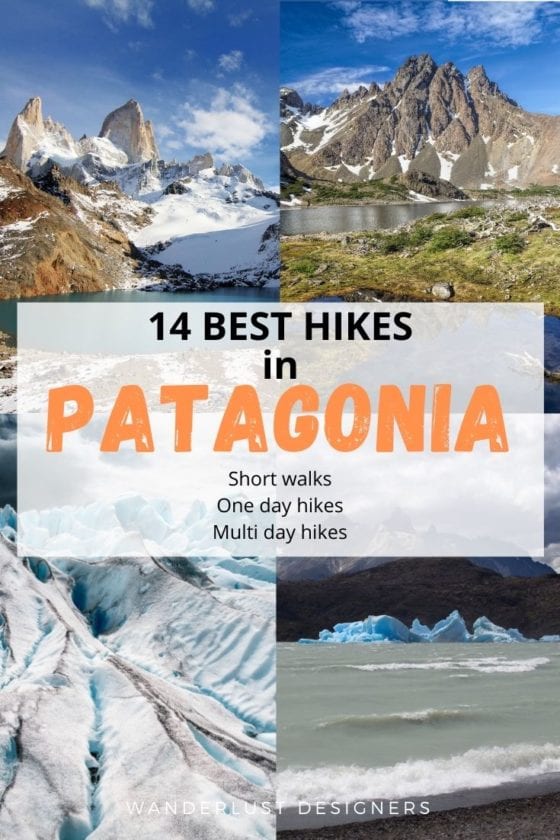


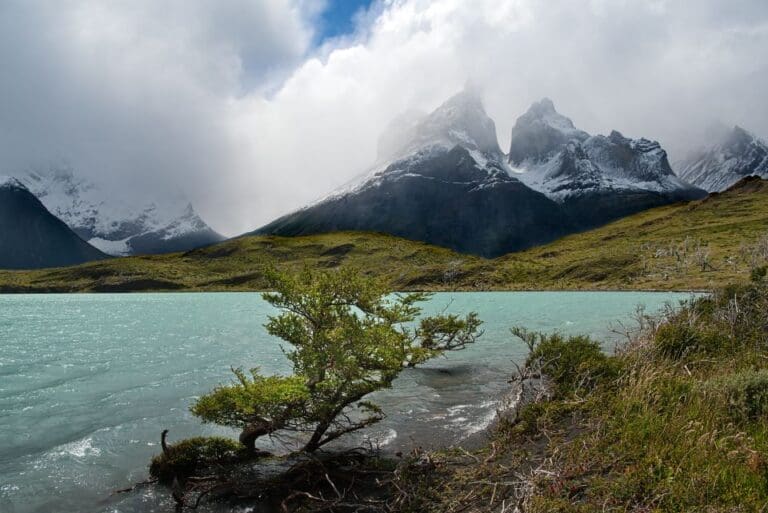



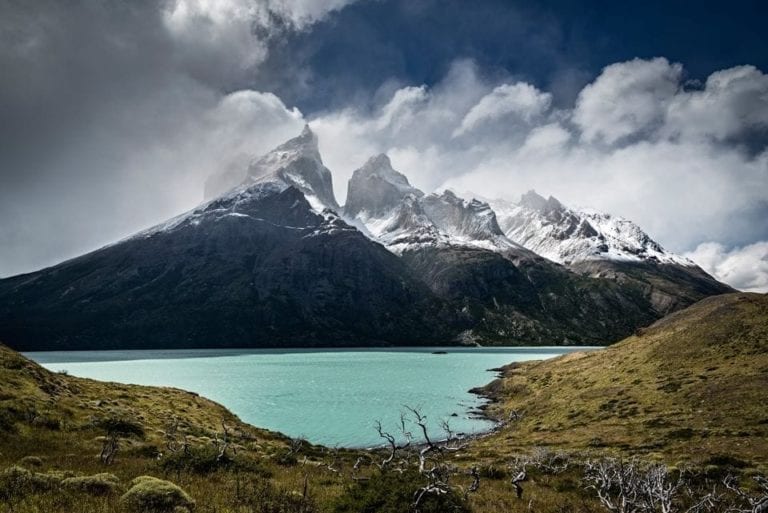

Oh wow, what an informative post. It is such a dream of mine to visit Patagonia as the landscapes look incredible and the hikes sound wonderful! I really hope I get to visit and complete at least some of these hikes 😊 it all looks wonderful for photography, especially the Dientes 😍
Thank you so much, Sarah! And I definitely hope that you get to visit Patagonia – I already can’t wait to see your pictures! They are amazing!
Wow, your photos are spectacular. We traveled Chilean Patagonia a few years ago and were blown away by the scenery and it seems we need to visit Argentinian Patagonia too. I am glad that you have some shorter hikes in your list as we don’t like to do 10h hikes in the middle of nowhere.
Thanks, Rudy! You definitely should visit Argentinian Patagonia, you’re right! And yes, I was baffled that there were almost no short hikes in Patagonia mentioned in any articles that I read. Not everyone can do the long ones!